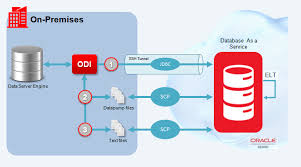In Oracle Data Integrator (ODI), mappings and transformations are key components used to design and implement data integration processes. Let’s explore what mappings and transformations are and how they are used in ODI:
- ODI Mapping:
- An ODI mapping represents the logical design of a data integration process. It defines the flow and transformation of data from a source to a target.
- A mapping consists of various components such as source datastores, target datastores, transformations, filters, joins, and aggregations.
- It provides a visual representation of the data flow and the operations performed on the data during the integration process.
- ODI Transformation:
- An ODI transformation is an operation or process applied to the data within a mapping.
- Transformations enable data manipulation, validation, enrichment, and aggregation during the data integration process.
- ODI provides a wide range of built-in transformations such as filtering rows, joining data, aggregating values, sorting data, applying calculations, and performing lookups.
- Transformations can be applied to individual columns or entire datasets, allowing for complex data manipulations.
- Mapping and Transformation Design Process:
- To create a mapping in ODI, you start by defining the source and target datastores within the mapping canvas.
- Next, you connect the appropriate columns from the source datastore to the target datastore to establish the data flow.
- To perform transformations, you can drag and drop transformation components onto the mapping canvas and configure their properties.
- Transformations can be connected to the source or target columns, and they enable data manipulation or enrichment before loading the data into the target.
- You can configure transformation properties, define expressions or conditions, and specify mappings between source and target columns.
- Advanced Transformations and Customization:
- In addition to the built-in transformations, ODI allows you to create custom transformations using SQL, PL/SQL, or other programming languages.
- Custom transformations provide flexibility to implement complex business rules and data transformations that are not available through the built-in transformations.
- These custom transformations can be integrated into mappings and used alongside the standard ODI transformations.
ODI mappings and transformations provide a powerful framework for designing and implementing data integration processes. They enable you to define the flow of data and perform data manipulation, validation, and enrichment tasks to ensure the accuracy and consistency of your integrated data.
SHARE
